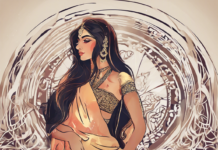Tamil literature holds a rich and diverse tapestry of themes, symbols, and motifs that offer unique insights into the culture and mythology of the Tamil people. One such symbol that holds great significance in Tamil literature is the Vaan Moondru, or the Three-color Ball. This symbol is deeply rooted in the cultural, religious, and philosophical beliefs of the Tamil society and has been explored by writers and scholars alike for its profound meanings and implications.
The Origins of Vaan Moondru:
The Vaan Moondru is a symbol that is often associated with the Tamil Sangam literary tradition, which dates back to ancient times. The Sangam literature, a collection of Tamil works composed between 300 BCE and 300 CE, is known for its portrayal of love, war, and aspects of day-to-day life. The Vaan Moondru is often mentioned in these texts as a symbol of unity and diversity, a theme that resonates throughout Tamil literature.
The Symbolism of Vaan Moondru:
-
Unity in Diversity: One of the key interpretations of Vaan Moondru is its representation of unity in diversity. The three colors of the ball, typically red, white, and black, symbolize the diverse elements of life coming together to form a harmonious whole.
-
Cosmic Balance: The Vaan Moondru is also seen as a representation of the cosmic balance in the universe. The three colors are believed to represent the three fundamental forces of nature – creation, preservation, and destruction. This balance is essential for the functioning of the universe.
Vaan Moondru in Classical Tamil Poetry:
-
Sangam Literature: The symbol of Vaan Moondru is prominently featured in Sangam poetry, where it is used to evoke themes of love, beauty, and harmony. Poets often use the image of the Three-color Ball to convey the complexities of human emotions and relationships.
-
Bhakti Poetry: Vaan Moondru is also a recurring motif in Tamil Bhakti poetry, where it is often associated with the divine trinity of Brahma, Vishnu, and Shiva. The three colors symbolize the different aspects of the divine, emphasizing their essential unity.
Contemporary Interpretations of Vaan Moondru:
In modern Tamil literature, writers and scholars continue to explore the symbolism of Vaan Moondru in new and innovative ways. The symbol has been adapted to reflect the complexities of contemporary society, addressing issues of diversity, identity, and social harmony.
Frequently Asked Questions (FAQs):
- What is the significance of Vaan Moondru in Tamil culture?
-
Vaan Moondru symbolizes unity in diversity, cosmic balance, and the essential interconnectedness of all things in Tamil culture.
-
How is Vaan Moondru used in classical Tamil poetry?
-
In classical Tamil poetry, Vaan Moondru is often used to evoke themes of love, beauty, and cosmic harmony.
-
What are the three colors of Vaan Moondru and what do they represent?
-
The three colors of Vaan Moondru are typically red, white, and black, representing creation, preservation, and destruction respectively.
-
How has the symbolism of Vaan Moondru evolved in contemporary Tamil literature?
-
In contemporary Tamil literature, Vaan Moondru is adapted to address issues of diversity, identity, and social harmony in modern society.
-
Are there any specific rituals or traditions associated with Vaan Moondru in Tamil culture?
- While there are no specific rituals associated with Vaan Moondru, the symbol is often used in cultural events, literature, and artistic expressions to highlight themes of unity and balance.
Exploring the symbolism of Vaan Moondru in Tamil literature offers a fascinating glimpse into the cultural and philosophical nuances of the Tamil people. This timeless symbol continues to inspire and resonate with readers and scholars alike, drawing attention to the enduring themes of unity, diversity, and cosmic harmony in Tamil literary tradition.









